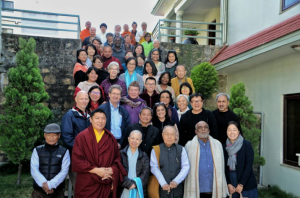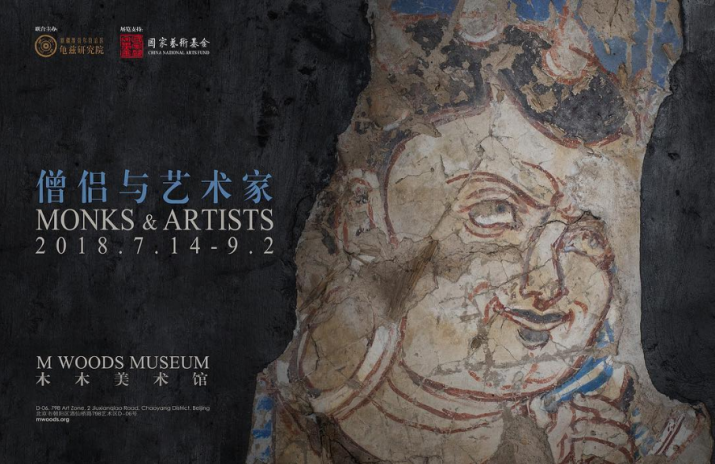
M WOODS, an independent, not-for-profit art museum in Beijing, is hosting an exhibition on the Buddhist grottoes of Kizil, in China’s Xinjiang Uyghur Autonomous Region. The exhibition, titled Monks and Artists, explores the beauty and originality of the Kizil Grottoes, a hub of Buddhist activity on the ancient Silk Road. The exhibition represents the fruit of 20 years of research by the Kucha Research Institute of Xinjiang, and celebrates the museum’s recent acquisition of three original mural fragments originally from the caves.
The Kizil Grottoes are a series of manmade rock-cut caves near Kizil Township in Xinjiang. Created between the third and eighth centuries under the ancient Tocharian Kingdom of Kucha, they are thought to be the earliest examples of the extensive Buddhist cave complexes found in present-day China. They are often described as one of the “Four Great Grottoes,” along with the Dunhuang Mogao Grottoes in Gansu Province, the Yungang Grottoes in Shanxi Province, and the Long Men Grottoes in Henan Province. The Kizil Grottoes were designated a UNESCO World Heritage Site in 2014.
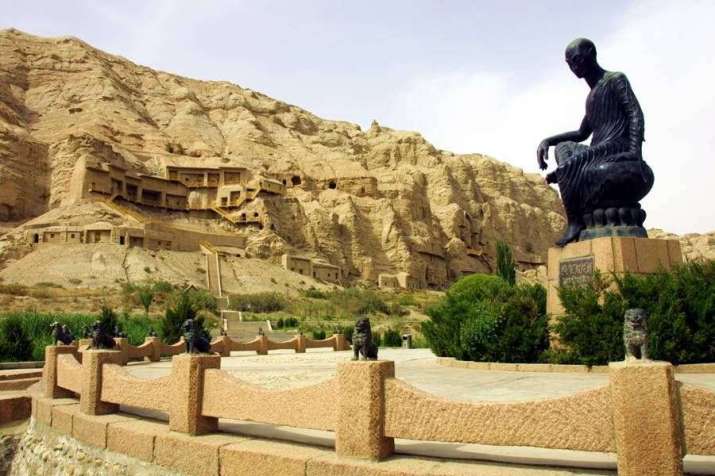
The Kizil cave complex consists of 236 known cave temples carved into a cliff and spanning two kilometers in length, intended as sites of self-cultivation for monks. Of the 236 grottoes, 135 are still relatively intact. Unfortunately, many of the caves have been defaced over the centuries, and the arrival of the Islam in the region and the destruction wrought during China’s Cultural Revolution have both left their marks on the site. In addition, archeological expeditions lead by foreign explorers in the late 19th and early 20th centuries lead to the removal of a number of murals and statues, now found in collections around the world. The most notable overseas collection of Kizil murals is housed at the Museum of Asian Art in Berlin, but fragments can be found scattered across institutions in France, Hungary, Japan, Russia, South Korea, and the United States, as well as in undocumented private collections.
While most the statues have disappeared, the site still features 5,000 square meters of wall paintings depicting the Jataka tales, avadanas, and legends of the Buddha, often featuring Gandharan or Sassanian artistic elements, rather than the Tang Chinese elements found at other sites—a testament of the influence of the ancient silk route. Efforts are currently being made to restore the caves to their former glory.
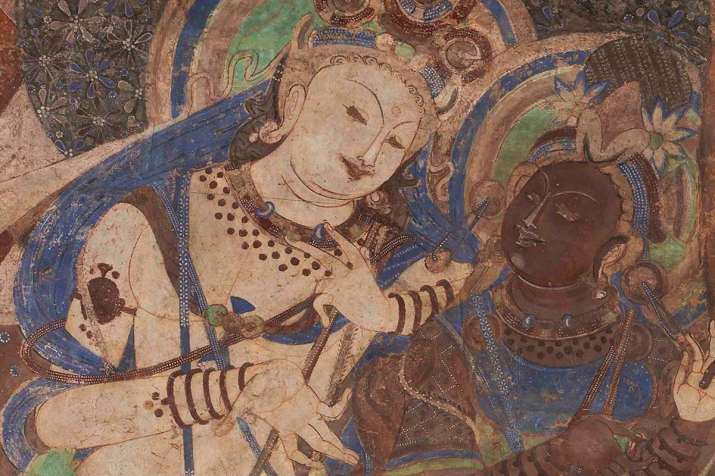
The Kucha Research Institute in Xianjiang has been working with overseas institutions that house murals from the Kizil Grottoes since 1998, in an effort to digitize every mural fragment and store these in a central collection in Xinjiang. The institute has collected and documented 465 fragments from different museums and collections in the world. With the help of 3D scanning technology, researchers have been able to match some of these fragments with their original location in the caves.
The first part of the exhibit at M WOODS features the results of 20 years of research by the Kucha Research Institute. It showcases 120 of the 465 digitized images of the overseas mural fragments in addition to two replicas of some of the more famous caves of the Kizil Grottoes, allowing visitors to further explore the caves.
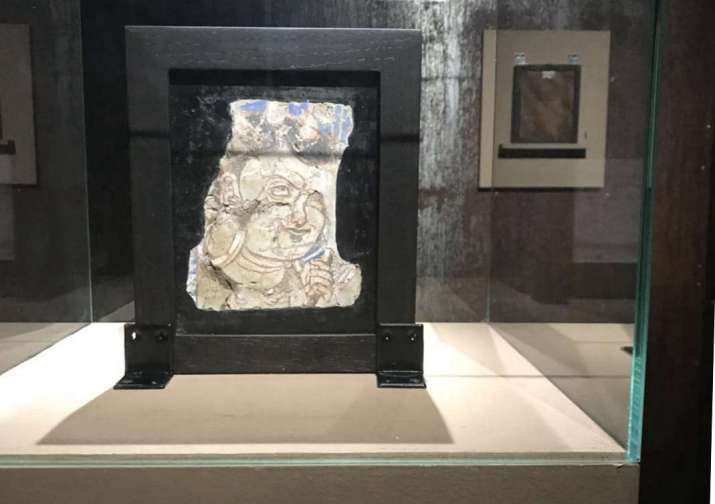
The second part of the exhibition includes three mural fragments from the Kizil Grottoes that M WOODS has recently acquired. These fragments are titled Head of a Deity, Mystery Figure with Five Hair Knots, and Millennium Smile. The latter is named after the enigmatic smile on the face of the member of the Kucha royal family depicted in the mural, that has captivated audiences for over a millennium.
M WOODS is the first museum in China to possess fragments of the caves.
See more
National treasures returned: Kizil Grotto murals (CGNT.com)
Kizil Caves, earliest Buddhist caves in China, hide rare images from the time of the Silk Route (Ancient Origins)
Monks and Artists (M WOODS)
M WOODS







